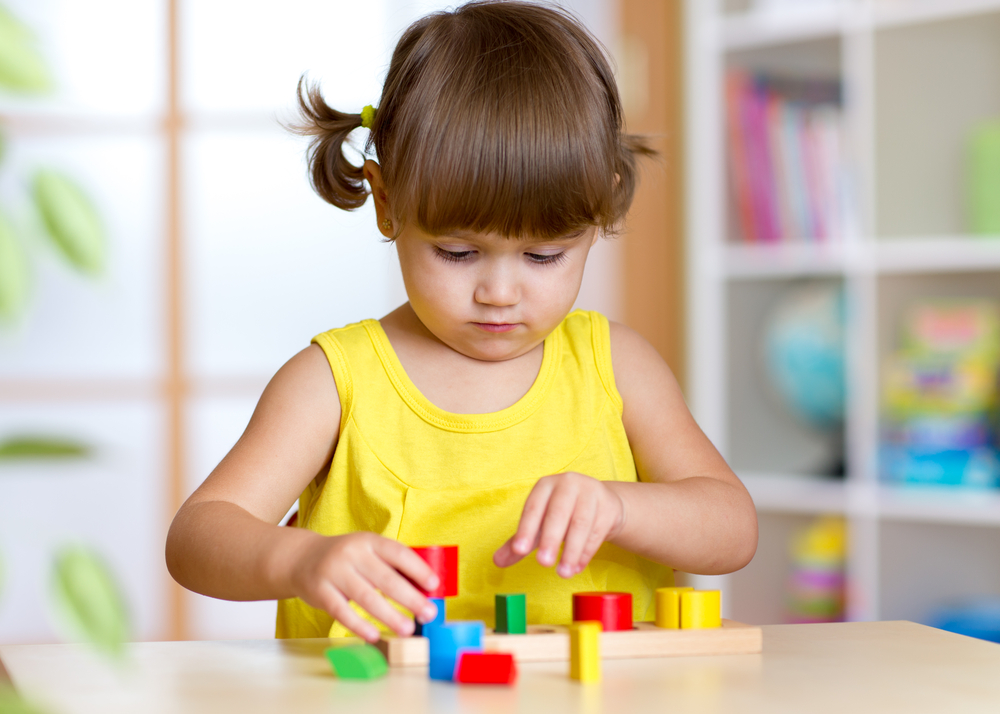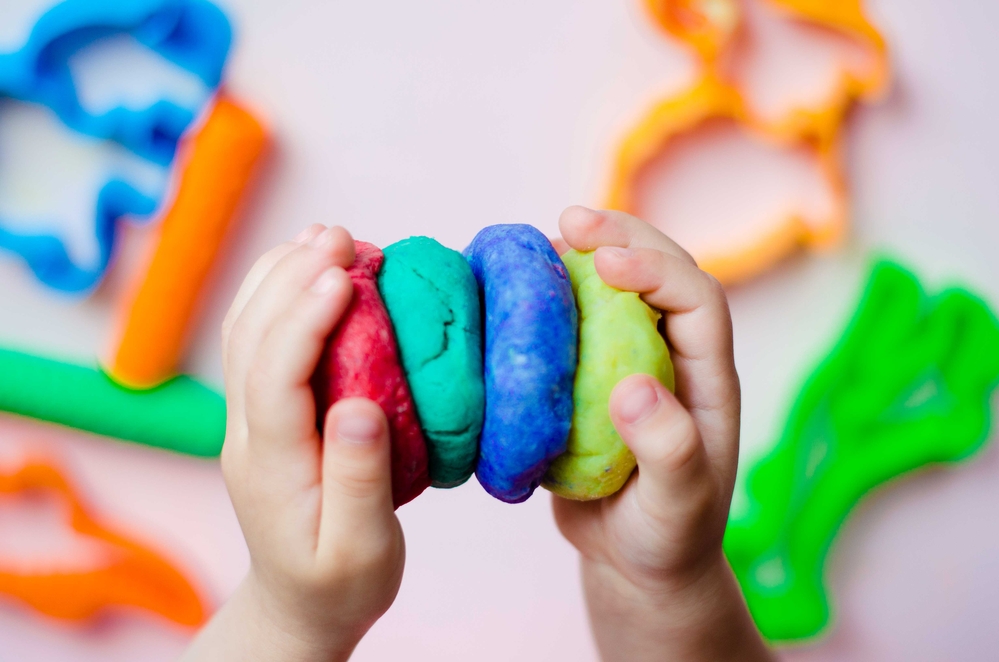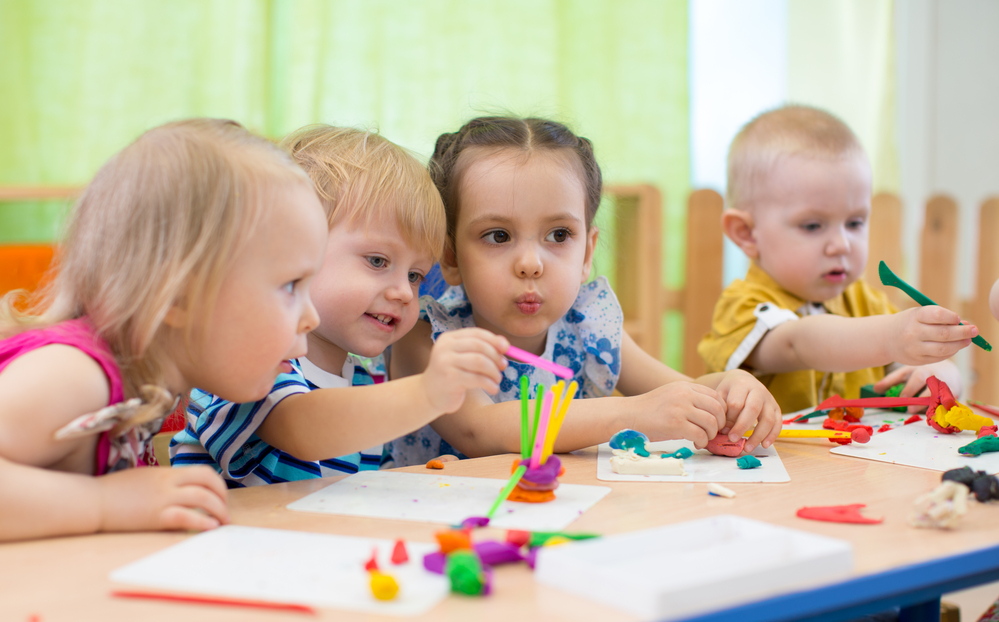The world around us is made up of many different shapes, angles, and colors! Understanding that we have special shapes we name and that they are in our everyday lives is important. That’s where teaching shapes for kids comes in.
Teaching your child shapes is more than just helping them understand what a circle, triangle, or octagon is. Recognizing and understanding shapes is a partner to learning to count.
So, what can you do to help your child develop a deeper understanding of shapes?
First, remember that helping your child learn something new shouldn’t be a mundane activity. The more fun and exciting learning is the more your child is likely to engage.
In this article, we’ll share six fun activities that you can try at home with your child to help make learning shapes both educational and entertaining.
But before we get to that, let’s take a look at what makes shapes so important for kids’ development.
Why Are Shapes Key To Development?

1) Math
When we teach children shapes, we help to lay a foundation for basic math skills. They will then be able to use these skills when tackling more complex math concepts in the future.
For instance, geometry is a branch of mathematics that is, in part, the study of shapes.
Understanding the basics of different shapes and the number of sides of each from an early age can help your child grasp other geometric concepts as they get older.
Working with shapes can also help preschoolers learn to count (as they discover how many sides different shapes have). Counting will help them when they get older and start adding, subtracting, and learning other math skills.
2) Vocabulary
Learning shapes to help build a solid math foundation may seem obvious to many people. But how does it help with vocabulary?
Learning shape names increases a child’s vocabulary. Basic geometric terms are not easy to learn and remember, but like learning color names, learning shape names is an important part of vocabulary development.
As a result, learning different shape names may help with early childhood reading and writing.
In addition to helping with vocabulary, knowing shapes can help kids recognize the shapes of the many road signs and symbols everywhere around us — stop signs, yield signs, and so on.
3) Characterization And Comparison
When a child learns that a triangle has three sides, a square has four equal sides, and so forth, it encourages them to concentrate on the characteristics of each shape.
Once they understand these basic shapes, they will be better prepared to learn more complicated figures when they get older.
Questions like, “What makes a rectangle different from a square?” will help develop their observational skills as well as their ability to compare and contrast.
4) Problem-Solving
Learning shapes for kids can help introduce problem-solving skills.
For instance, when playing with shape-sorting toys, your child must identify the different characteristics of a triangle so they can then match it with the triangle hole in the toy.
This skill can also help with putting together puzzles. A child will have to pay attention to the shape of the piece they’re holding and the openings in the puzzle to determine which part fits where.
Different Types Of Shapes For Kids To Learn

When teaching shapes for kids, it’s important to know what to start with and, as your child understands the basics, which shapes they can master next. Let’s take a look!
1) Basic 2D Shapes (For Beginners)
- Circles
- Squares
- Rectangles
- Triangles
2) Advanced 2D Shapes (For Kindergarteners)
- Hearts
- Arrows
- Stars
- Semi-circles
- Ovals
Shapes For Kids: 6 Fun Activities
1) Mini-Tangram Puzzle
What You’ll Need
- Our free printable tangram puzzle
- A pair of scissors
What To Do
This fun tangram puzzle helps children piece shapes together like pros!
Start by cutting out the different shapes that you’ll see on page one of the printable. Then use the outline on page two to demonstrate to your child where the pieces need to fit.
After showing them, let them practice on their own! Once they’ve mastered this activity, you can have them complete the puzzle using only the border on page three.
This activity helps children understand the concepts of shapes, problem-solving, symmetry, angles, and comparisons.
2) PlayDoh Shapes

What You’ll Need
- PlayDoh
- A sheet of construction paper with outlines of different shapes
- Clear plastic sleeves (the ones made for binders) to place the paper inside
What To Do
Using the soft PlayDoh, help your little one fill the shape outlines on your paper. Remember to highlight the names of the different figures as you work through them.
Sensory activities like these are an excellent way to help children engage with what they are learning. Also, having your paper inside the plastic sleeves will make it easy to clean up when playtime is done!
3) The Tray Memory Game

What You’ll Need:
- A tray
- Different pre-cut shapes
What To Do:
Place three shapes at a time on the try. Show your child the shapes and describe the characteristics of each one. For instance, “This is a square. A square has four equal sides.”
After showing and describing the shapes, cover the tray with a cloth and take one of the shapes away. When you reveal the tray again (now with two shapes), ask your child to tell you which figure is missing.
Besides helping your child learn the properties of different shapes, this game helps to test and improve their memory.
4) Pattern Play
What You’ll Need:
- Several sheets of construction paper in different colors
- A pair of scissors
What To Do:
Cut out six or seven copies of these shapes: circle, triangle, square, rectangle. Use a different color of construction paper for each shape.
Next, make a linear pattern (ex: square, square, circle, square, square, circle) and ask your child to add the next shape when you get to the end of it.
Continue taking turns to add more to the pattern until all the shapes are used. If the first pattern is a success, you might want to make a second, third, or fourth pattern for even more fun practice!
5) Detective Role Play

What You’ll Need:
- Crayons
- Notebook
What To Do:
Select any two objects from around your home that have the same shape but look different. Don’t tell your child what they are yet.
Then explain to them that they are a detective and need to solve an important shape mystery. Give your child some clues about the shape of the object so that they can solve the mystery. For example, “It has three sides.”
When your child feels confident that they know what the object is, ask them to draw it in their detective notebook.
Now give them clues for the second object. After finding and drawing it into their notebook, it’s time to evaluate the two different items. Discuss how many other objects have the same shape.
Play the game again with another shape. You can also head outside to search for shapes around the neighborhood!
Here’s more on this fun game.
6) Make A Shape Collage
What You’ll Need:
- Two sheets of white paper
- Two colored sheets of paper
- Scissors
- Glue stick
What To Do:
From one colored sheet of paper, cut out different styles of the same shape (for instance, a right-angled triangle, an obtuse triangle, and an acute triangle). Then cut out various styles or sizes of another shape (a small, medium, and large circle).
Now, ask your child to make a collage of the same shapes on each sheet of white paper.
This activity will help your child understand the true characteristics of each shape. They’ll see that even though the three triangles look different, the fact that they each have three sides makes them all triangles!
It’s Time For Shapes For Kids!

Learning shapes for kids can help your child develop many essential skills, including math, vocabulary, and problem-solving. These are all key elements to setting your child up for success on their learning journey.
While teaching your young learner shapes, remember to emphasize the names of every shape. Kids tend to remember the shape types but forget what they are called.
In addition to just teaching your child shapes, remember to relate them to the surrounding objects. When discussing the oval characteristics, show them an egg. Or when you talk about a circle, show them the shape of a full pizza.
The world around us is full of interesting shapes, many of which your young learner has likely already seen. Now, it’s time to help them make sense of it all!
,


